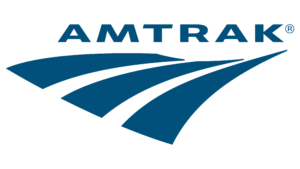Managing and
Supervising Effectively
Finance for Non-Financial Managers
Series: Enhancement Skills
Course: Finance for Non-Financial Managers
Gain a complete understanding of the principles
of corporate finance in just two days!
From understanding the essence of cash flow to learning how to create value on a corporate level, this comprehensive program covers all the principles of corporate finance.
Through the effective use of actual case studies and annual reports of major U.S. companies, you’ll come away with a firm grasp of the principles of corporate finance. You’ll be better equipped to speak and interact intelligently with finance colleagues…make more informed business decisions...analyze financial statements with new clarity...know the workings of the financial markets…and understand that the core purpose of your firm is to increase shareholder value.
"Committed to continually improving management, team, and organization performance."
- How Participants Will Benefit
- What We Will Address
- Become grounded in all the principles of corporate finance
- Reduce the risk of financial errors in managerial decision making
- Learn how accounting and bookkeeping work
- Discover the ins and outs of financial statements and what can and cannot be learned from them
- Understand how budgeting fits into the world of accounting and the primacy of cash flow
- Gain greater insight into all the principles of corporate finance, including interest and ROI
- Find out how a firm allocates its funds to investment opportunities
- Gain the skills that will help you make the right buy/lease decisions
- Learn how to take advantage of cash discounts offered by vendors
- Make more profitable sales by understanding fixed vs. variable costs
- Monitor operating results to achieve long-term financial goals
- Accounting essentials: booking transactions…cash and accrual methods…assets, liabilities and capital
- Reading annual reports: reading and understanding financial statements…SEC requirements…forms and meanings of the Auditor’s Opinion…the importance of footnotes in financial statements
- Seeing your firm from a finance perspective: the organization as an investment tool…classes of investors…WACC and EVA…the importance of cash and flow timing…leverage and risk
- Evaluating financial statements: computing financial ratios to assess liquidity, profitability, leverage and risk…the DuPont formula…merits and pitfalls of financial ratios
- Operational budgeting: constructing and using budgets…avoiding pitfalls…budgeting techniques, variances and hierarchies
- Time value of money: computing time value for money and applying the mathematics of compound interest and present value
- Capital budgeting: preparing and using capital budgets…applying time value of money…using various mathematical techniques
- How financial markets value a business: value models and financial concepts to enhance shareholder value
- Cost analysis, profit planning and exposures to volume/price risks: categorizing costs to make better decisions…determining break-even levels of quantity, price and cost…understanding “operating leverage”
Finance for Non-Financial Managers
- Understanding Bookkeeping and Accounting
- How to Read an Annual Report
- The Firm from a “Finance Perspective”
- Evaluating Financial Statements
- Operational Budgeting
- The Time Value of Money
- Capital Budgeting
- How the Financial Markets Value a Business
- Cost Analysis, Profit Planning, and Exposures to Volume/Price Risks
- Keep Books and Use Them to Construct Financial Statements, Including a Balance Sheet and Statement of Cash Flows
- Differentiate between the Cost and Accrual Methods of Accounting
- Categorize Assets, Liabilities, and Capital
- Read and Understand the Financial Statements of a Fortune 500 Corporation
- Recognize and Interpret the Portions of the Annual Report Required by the Securities and Exchange Commission
- Recognize the Form(s), and Meaning, of the Auditor’s Opinion
- Read and Understand the Importance of Footnotes in Evaluating Financial Statements
- View the Organization from the “Finance Perspective”
- Discuss the Concepts of the Weighted Average Cost of Capital and EVA®
- Understand the Importance of Cash and the Timing of Cash Flow
- Explain How “Financial Leverage” Creates a Degree of Risk for the Company
- Compute the Financial Ratios Used by Financial Analysts to Assess:
– The Liquidity of a Business
– The Profitability of a Business
– The Risk of a Business - Compute the DuPont Formula, and Discuss What It Means
- Judge and Discuss the Merits and Pitfalls of Each Ratio
- Discuss with Financial People, the Meaning and Implications of “Financial Leverage” in Relation to the Associated Ratios
- Construct a Budget
Use Budgets Efficiently - Avoid Budgeting Fallacies
- Work with Different Budgeting Techniques
- Compute a Time Value for Money, and Discuss It with Financial People in Your Organization
- Apply the Simple Mathematics of Compound Interest and of Present Value
- Prepare and Use Capital Budgets
- Apply “Time of Money” to Capital Budgeting
- Use Various Mathematical Techniques in Capital Budgeting
- Discuss Different Models of How the Market Values a Business
- Enhance Shareholder Value in Your Organization
- Categorize Costs in a Different Way, in an Effort to Make Better Business Decisions “At the Margin”
- Utilize a Model That Determines Break-even Levels of Quantity, Price, and Cost
- Understand and Discuss the Meaning of the Term “Operating Leverage”
- Structure Costs When Your Market Has “Volume Risks” vs. When Your Market Has “Price Level Risk”










Contact
Pinnacle Performance
Improvement Worldwide
United States of America
